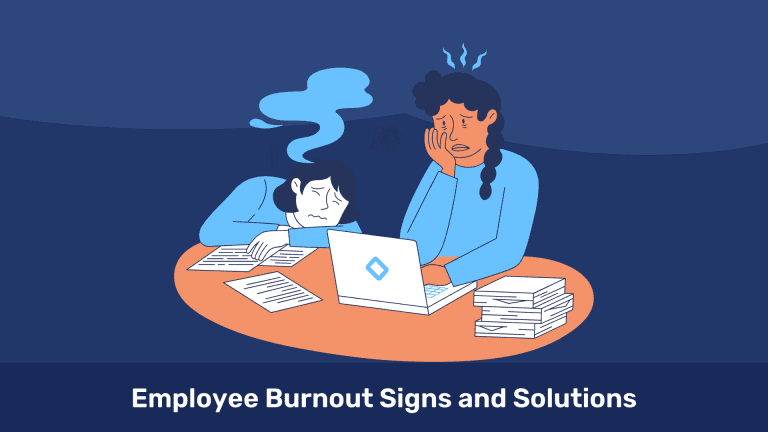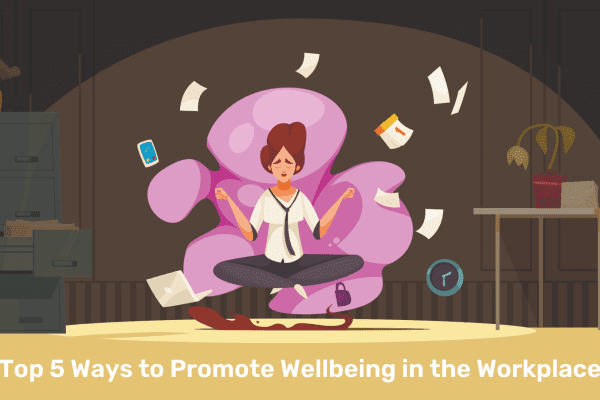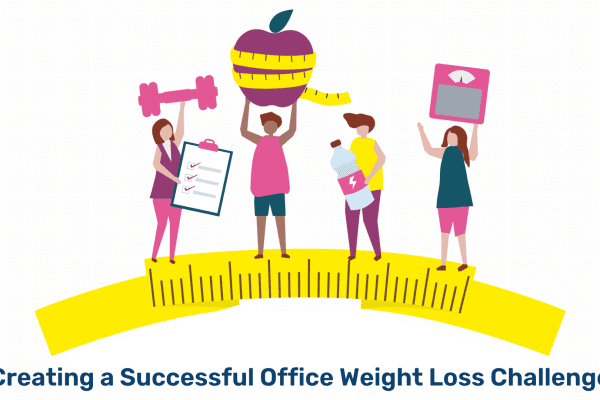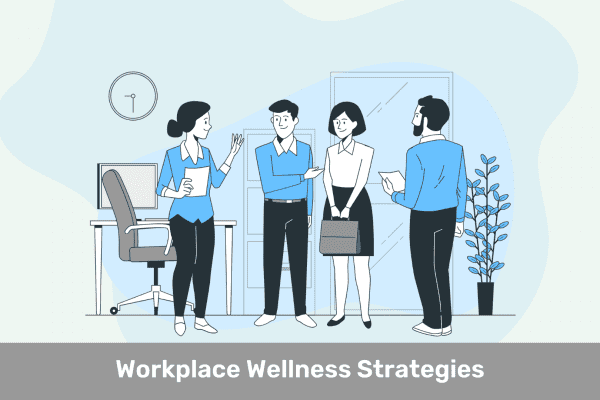Introduction
In today’s fast-paced and demanding work environments, the specter of employee burnout looms ominously over organizations worldwide. As the pressures of modern work culture continue to intensify, recognizing and addressing the subtle yet destructive signs of employee burnout have become paramount for businesses striving to maintain a healthy, productive workforce. This article delves into the crucial realm of employee burnout signs, shedding light on a growing concern that has significant implications for both employees and their organizations.
The statistics are unequivocal. According to a Gallup survey conducted in 2020, a staggering 76% of employees in the United States have reported experiencing some form of burnout at work at least once in their careers. Additionally, the World Health Organization (WHO) has officially recognized burnout as an occupational phenomenon, emphasizing its global reach and impact on workers’ well-being. This alarming prevalence underscores the urgency of addressing employee burnout signs as an essential component of effective workforce management.
Employee burnout signs are not mere indicators of an individual’s struggle with excessive workload or prolonged stress; they are alarm bells for employers. Failure to heed these signs can lead to a cascade of consequences, including decreased productivity, higher turnover rates, and a marked decline in the overall morale of the workforce. In the pages that follow, we will explore these signs in-depth, dissecting the nuanced symptoms that often go unnoticed until they culminate in a full-blown burnout crisis.
In the modern professional landscape, where organizations vie for talent and competitiveness is fierce, an astute understanding of employee burnout signs is indispensable. By proactively addressing these signs, employers can not only preserve the mental and physical health of their workforce but also fortify their businesses against the detrimental effects of burnout-related issues. As we embark on this journey through the world of employee burnout signs, we invite you to equip yourself with the knowledge needed to build a resilient and thriving workplace.
What is Employee Burnout?
Employee burnout is a complex and multifaceted psychological phenomenon characterized by chronic, prolonged, and extreme levels of physical and emotional exhaustion, cynicism or detachment from one’s job, and reduced professional efficacy. It is a state of profound fatigue and mental strain that results from persistent exposure to excessive work-related stressors and demands. Employee burnout isn’t just feeling tired or stressed occasionally; it’s a state of physical and emotional depletion that can have severe consequences for both individuals and organizations.
Here are the key components that define employee burnout in detail:
-
Emotional Exhaustion:
This is the core element of burnout. Employees experiencing emotional exhaustion feel drained and depleted of their emotional resources. They may struggle to cope with even minor stressors, feel emotionally detached from their work, and find it challenging to invest themselves emotionally in their tasks or interactions with colleagues and clients.
-
Cynicism and Detachment:
Another key aspect of burnout is the development of a negative, cynical attitude towards one’s job, colleagues, and the organization as a whole. Employees with burnout often become disengaged, aloof, and distant, which can lead to interpersonal conflicts and a decline in teamwork.
-
Reduced Professional Efficacy:
Burnout can severely impact an individual’s perceived competence and effectiveness at work. Employees may start to doubt their abilities and question whether they can meet the demands of their job. This self-doubt can further erode their motivation and job performance.
-
Physical Symptoms:
Burnout doesn’t just affect mental health; it can manifest physically as well. Employees may experience a range of physical symptoms, including headaches, gastrointestinal issues, sleep disturbances, and a weakened immune system. These physical symptoms often result from the chronic stress associated with burnout.
-
Cognitive Impairment:
Burnout can impair cognitive functions such as memory, attention, and decision-making. Employees may have trouble concentrating on tasks, making decisions, or even remembering important details, which can further impede their job performance.
-
Decline in Work Performance:
Ultimately, employee burnout can lead to a significant decline in job performance. The combination of emotional exhaustion, cynicism, and reduced efficacy can result in missed deadlines, errors, decreased productivity, and increased absenteeism.
It’s important to note that burnout is not a temporary or occasional feeling of stress or fatigue. Instead, it is a prolonged and chronic state that develops gradually over time. It is often the result of sustained exposure to high levels of job-related stressors, such as excessive workload, lack of control over one’s work, inadequate support, and a lack of work-life balance.
Recognizing and addressing employee burnout is essential for both the well-being of individuals and the success of organizations. Employers and employees alike should be aware of the signs of burnout and take proactive steps to prevent and manage it, such as seeking support, setting boundaries, and promoting a healthy work environment. Failure to address burnout can lead to serious consequences, including employee turnover, decreased morale, and increased healthcare costs.
12 Stages of Burnout
Burnout is often described as a gradual process that evolves through various stages, each marked by distinct symptoms and characteristics. While the specific stages and their names may vary slightly depending on the source, a commonly referenced model for understanding burnout involves 12 stages:
1. Overwhelming Workload:
At the outset, individuals experience an excessive workload or prolonged periods of high stress. They may take on more tasks than they can reasonably handle, leading to a sense of being overwhelmed.
2. Ambition and Dedication:
In this stage, individuals are highly ambitious and dedicated to their work. They may willingly invest long hours and immense effort in pursuit of their professional goals.
3. Neglecting Personal Needs:
As dedication to work intensifies, individuals often begin to neglect their personal needs, including adequate sleep, exercise, and nutrition. Their focus shifts primarily to their job.
4. Displacement of Conflicts:
Rather than addressing conflicts or stressors head-on, individuals in this stage tend to avoid or displace them. They may suppress their emotions and continue to prioritize work over their well-being.
5. Revision of Values:
In this stage, individuals may start to reassess their values and priorities. They may question whether their intense dedication to work is aligned with their personal values and life goals.
6. Denial of Emerging Problems:
People experiencing burnout often deny or downplay the emerging signs of trouble. They might dismiss their fatigue, irritability, or physical symptoms as temporary or inconsequential.
7. Withdrawal and Alienation:
Burnout can lead to social withdrawal and a sense of alienation from colleagues and friends. Individuals may isolate themselves and become increasingly cynical about their work environment.
8. Behavioral Changes:
As burnout deepens, individuals may exhibit noticeable behavioral changes. These can include increased irritability, mood swings, and an overall negative attitude towards work and life.
9. Depersonalization:
This stage is characterized by a sense of detachment and cynicism towards clients, customers, or colleagues. Individuals may start treating others as objects rather than people, often leading to strained interpersonal relationships.
10. Inner Emptiness:
A profound sense of emptiness and despair often sets in during this stage. Individuals may feel emotionally drained and devoid of any sense of fulfillment or purpose in their work.
11. Depression:
Burnout can progress to clinical depression in some cases. Symptoms may include persistent sadness, loss of interest in activities, changes in appetite and sleep patterns, and difficulty concentrating.
12. Burnout Syndrome:
The final stage, often referred to as the “burnout syndrome,” represents the culmination of all previous stages. It is marked by a sense of helplessness, hopelessness, and complete physical and emotional exhaustion. At this point, individuals may be unable to continue working and require significant time off or even a career change to recover.
It’s important to note that not everyone who experiences high levels of stress will progress through all these stages, and the trajectory may vary from person to person. Moreover, recognizing burnout in its earlier stages and taking proactive steps to address it is crucial to prevent it from reaching the more severe and debilitating stages. Early intervention and seeking support can significantly improve an individual’s chances of recovery and prevent long-lasting harm to their physical and mental well-being.
6 Major Employee Burnout Signs
Employee burnout manifests through a variety of signs and symptoms, and recognizing these indicators is crucial for early intervention and prevention. Here are six key employee burnout signs in detail:
1. Chronic Fatigue and Exhaustion:
- Employees experiencing burnout often report persistent and overwhelming fatigue, both physically and mentally. They may feel drained, even after a full night’s sleep.
- This exhaustion can lead to a noticeable decline in energy levels, making it challenging to stay engaged and productive throughout the workday.
- Everyday tasks that were once manageable become arduous, and the individual may struggle to concentrate or make decisions due to mental fatigue.
2. Decreased Job Performance:
- One of the most noticeable signs of burnout is a decline in job performance. Employees may miss deadlines, make more errors, and produce lower-quality work than they did when they were not experiencing burnout.
- There may be a shift from being highly motivated and engaged in tasks to a sense of apathy and disinterest in one’s work.
- A lack of enthusiasm and lower productivity often accompanies burnout, even in roles that were previously fulfilling.
3. Increased Irritability and Mood Swings:
- Burnout can lead to heightened irritability, mood swings, and a generally negative attitude. Employees may become more easily frustrated or agitated.
- Interactions with colleagues and superiors can become strained, as the individual may react defensively or negatively to feedback or suggestions.
- This shift in behavior can negatively impact workplace relationships and contribute to a toxic work environment.
4. Withdrawal and Isolation:
- Employees experiencing burnout may withdraw socially and isolate themselves from coworkers and friends.
- They may avoid workplace interactions, social events, and even personal gatherings. This isolation can exacerbate feelings of loneliness and contribute to a sense of being overwhelmed.
- Isolation can also lead to a lack of support, making it more difficult for individuals to cope with burnout.
5. Cognitive Impairments:
- Burnout can impact cognitive functions, leading to difficulties in concentration, memory, and decision-making.
- Individuals may struggle to focus on tasks, often finding themselves easily distracted or forgetful.
- Complex problem-solving and creative thinking may suffer, further hindering job performance.
6. Physical Symptoms:
- Burnout doesn’t just affect mental health; it can manifest in physical symptoms as well. Employees may experience headaches, gastrointestinal issues, muscle tension, and sleep disturbances.
- The constant stress associated with burnout can weaken the immune system, making individuals more susceptible to illness.
- Persistent physical symptoms often serve as clear signals that chronic stress is taking a toll on an employee’s overall health.
Recognizing these employee burnout signs is vital for employers and coworkers who want to support their colleagues’ well-being. Addressing burnout early can help prevent more severe consequences, such as extended leaves of absence, increased turnover, and the negative impact on team morale and company culture. Encouraging open communication and providing resources for managing stress and workload are important steps in combating burnout in the workplace.
How to Prevent Employee Burnout?
Preventing employee burnout is essential for maintaining a healthy and productive work environment. Here’s a detailed guide on how to prevent employee burnout:
Promote Work-Life Balance:
- Encourage employees to set clear boundaries between work and personal life. Avoid expecting them to be constantly available outside of regular working hours.
- Support flexible work arrangements, such as remote work or flexible hours, when feasible.
- Lead by example: demonstrate a healthy work-life balance to show employees that it’s not just acceptable but encouraged.
Manage Workload Effectively:
- Regularly assess employees’ workloads to ensure they are manageable and realistic. Avoid overloading individuals with excessive tasks and responsibilities.
- Prioritize tasks and help employees set realistic goals, focusing on quality over quantity.
- Consider redistributing tasks or hiring additional help if the workload remains consistently high.
Set Clear Expectations and Goals:
- Clearly communicate job expectations, roles, and responsibilities to employees.
- Work with employees to establish achievable goals and milestones. Regularly review and adjust these goals as needed.
- Provide constructive feedback and recognition for a job well done to keep motivation high.
Encourage Open Communication:
- Foster a culture of open and honest communication where employees feel comfortable discussing their concerns, stressors, and challenges.
- Conduct regular one-on-one meetings to check in with employees, provide support, and address any issues promptly.
- Actively listen to employee feedback and take appropriate action to address their concerns.
Offer Training and Skill Development:
- Provide opportunities for skill development and training to help employees feel competent and confident in their roles.
- Ensure that employees have the resources and tools they need to perform their jobs effectively.
- Encourage continuous learning and growth within the organization.
Create a Supportive Work Environment:
- Foster a workplace culture that promotes well-being, inclusivity, and support among colleagues.
- Recognize and reward hard work and achievements to boost morale.
- Implement Employee Assistance Programs (EAPs) or mental health resources to provide support for employees facing personal or work-related challenges.
Promote Employee Autonomy:
- Give employees a degree of autonomy and decision-making authority in their roles.
- Trust employees to manage their workloads and tasks effectively, allowing them to take ownership of their projects.
- Empower employees to suggest process improvements and changes that can enhance their work experience.
Manage and Mitigate Workplace Stressors:
- Identify common sources of stress in the workplace, such as excessive meetings, unrealistic deadlines, or ineffective communication, and work to address them.
- Encourage stress-reduction techniques like mindfulness, meditation, or relaxation exercises.
- Promote a collaborative problem-solving approach to tackle systemic workplace stressors.
Offer Adequate Support and Resources:
- Ensure employees have access to the resources and support they need to manage their workload and stress levels effectively.
- Provide opportunities for employees to seek mentorship or coaching when needed.
- Educate employees on available mental health resources and encourage their use.
Monitor and Respond to Early Warning Signs:
- Train managers to recognize early signs of burnout and address them proactively.
- Encourage employees to self-monitor their well-being and seek help or support if they notice signs of burnout.
- Implement regular check-ins to assess employees’ stress levels and provide assistance as needed.
Preventing employee burnout requires a proactive and holistic approach that considers both individual and organizational factors. By creating a supportive work environment, fostering open communication, and actively managing stressors, employers can significantly reduce the risk of burnout and promote the well-being of their employees.
Conclusion
Recognizing and addressing employee burnout signs is paramount for creating a healthy, productive, and sustainable work environment. By implementing strategies such as promoting work-life balance, offering support, and fostering open communication, organizations can mitigate the risk of burnout and prioritize the well-being of their employees.
At Woliba, we understand the importance of combating burnout, and we’re here to help. Our platform provides educational articles and resources to empower both employees and employers with the knowledge and tools needed to prevent and manage burnout effectively. We also offer gamification features to engage and motivate individuals on their well-being journey.
Don’t wait until burnout becomes a widespread issue in your organization. Contact us today to learn how Woliba can support your efforts in reducing burnout and creating a healthier, happier workplace. Together, we can make a positive difference.






